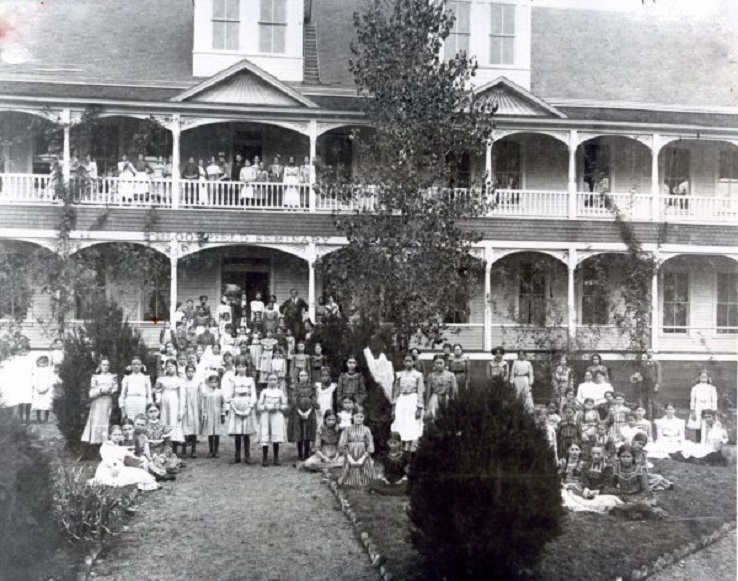 Mrs. D. H. Johnston, the subject of this
sketch, was born near Bloomfield, Chickasaw Nation, September, 1865. She was
the daughter of J. R. Harper, a white man, who came to the territory from
Louisburg, North Carolina, and a full-blood Chickasaw lady whose maiden name
was Miss Serena Factor, and who assisted in the primary department for a while
at Bloomfield when Parson Carr was contractor. Mrs. Johnston was educated principally at Bloomfield Seminary, but attended Savoy College, in Texas, one term. She began teaching in 1884, near Pennington, ten miles northwest of Tishomingo, while Col. G. W. Harkins was Superintendent of Public Instruction of the Chickasaw Nation. The following year (1885) Mr. Johnston employed her as one of the teachers at Bloomfield, where she continued to teach four years in succession. Her intellectuality, her kind disposition and beautiful countenance won for her a host of friends. In 1889 the subject of this sketch was married to Mr. Johnston. Since her marriage she has retained her position as teacher in his school, which she occupies at present. One daughter -- Wahneta E., a lovely child -- blesses this marriage. Mrs. Johnston belongs to the house of Incona (In-co-na).  Bloomfield Academy
 Bloomfield Seminary, also known as Bloomfield Academy, a Chickasaw school for girls, was founded in 1852 by Rev.
John Harpole Carr. Rev. Carr devised the name "Bloomfield" for
his tent residence from the profusion of wild flowers that grew along
the wilderness path in order to assist his friend, former Chickasaw
Jackson Kemp, send him a message after returning home from a visit
between the two men. (Chronicles of Oklahoma, Decenber 1924).
The
school was located between present-day Kemp and Achille,
Oklahoma; the school opened in 1856 and was just across the Red River
from Grayson County, Texas, about 10 miles east of Colbert, Indian
Territory. Julia Beeler Smith in her recollection of the school written in the 1982 edition of Colbert, 1845-1982, she recalled visiting Bloomfield Academy which could only be reached by a winding road through dense forest that bordered the Red River. The teachers were primarily Methodist missionaries sent from schools in the Eastern United States. Bloomfield Academy and the 13 other boarding schools for Choctaws and Chickasaws were supported by funds from the missionary boards in charge of the schools and annuity funds from the two Native American tribes. Rev. Carr's salary was $600 per year and the teachers' salaries were raised from $100 per year in 1852 to $250 by 1914. Since Rev. Carr was a carpenter by trade, he did the cabinetry work and cultivated a farm on which he raised wheat, corn and potatoes. He also added orchards of peaches, plums and apples. The school was discontinued for a few years during the Civil War but was later re-opened. Control passed to the U.S. government after passage of the Curtis Act in 1898. Bloomfield Academy burned January 24, 1914. Later, Bloomfield Academy was moved to Ardmore. From: Donna Hunt: Bloomfield Was Early Chickasaw School, for The Herald Democrat, posted March 27, 2018. Viewed January 11, 2019, https://www.heralddemocrat.com/news/20180327/bloomfield-academy-was-early-chickasaw-school.   Bloomfield Academy History  Chickasaw Research Native American Research Susan Hawkins © 2024 If you find any of Grayson County TXGenWeb links inoperable, please send me a message.  |
